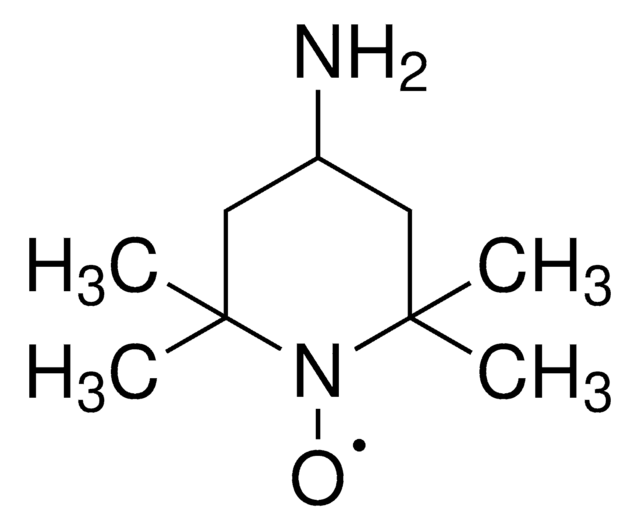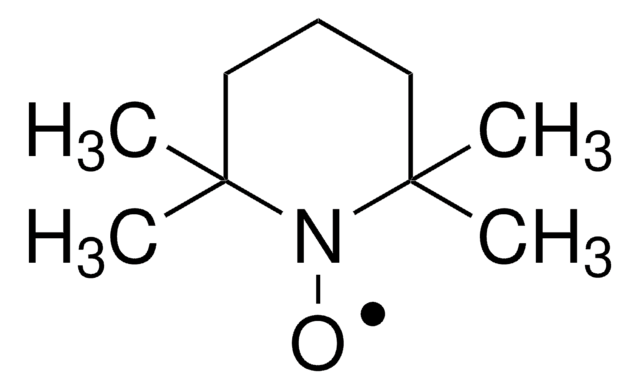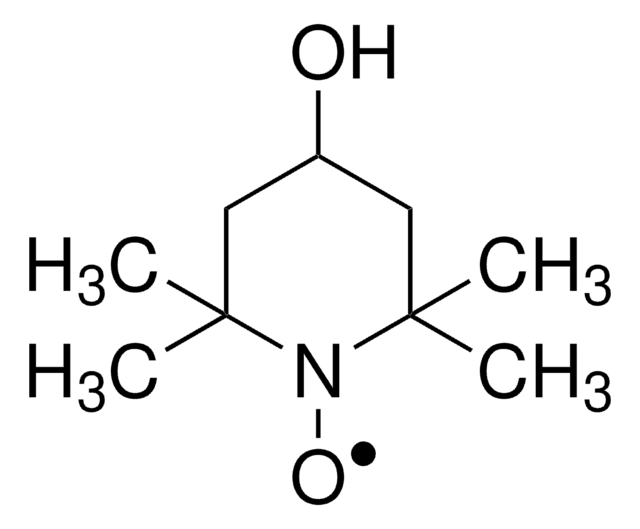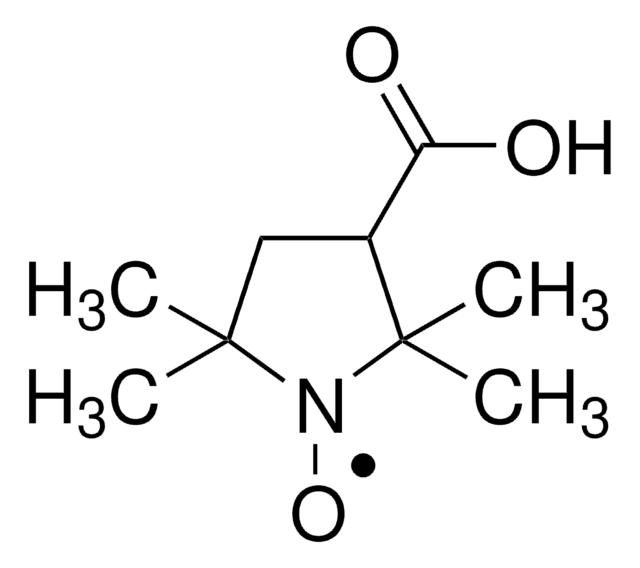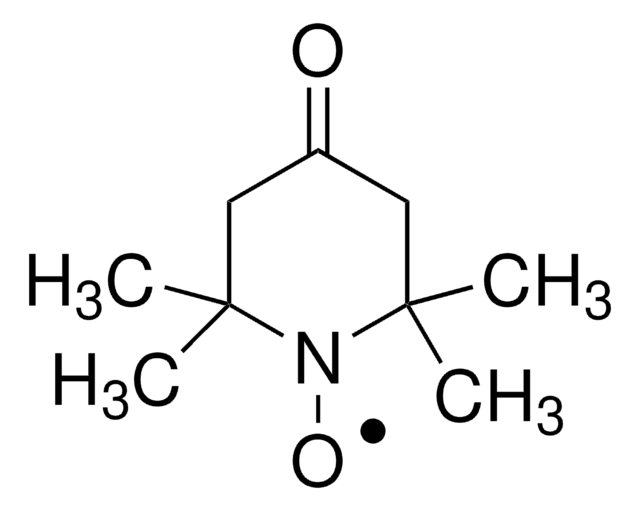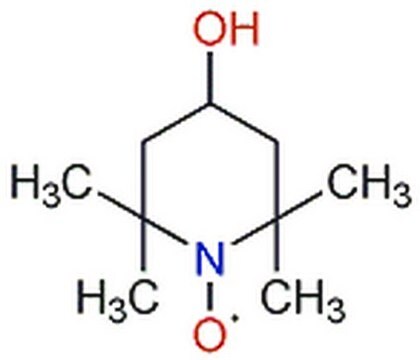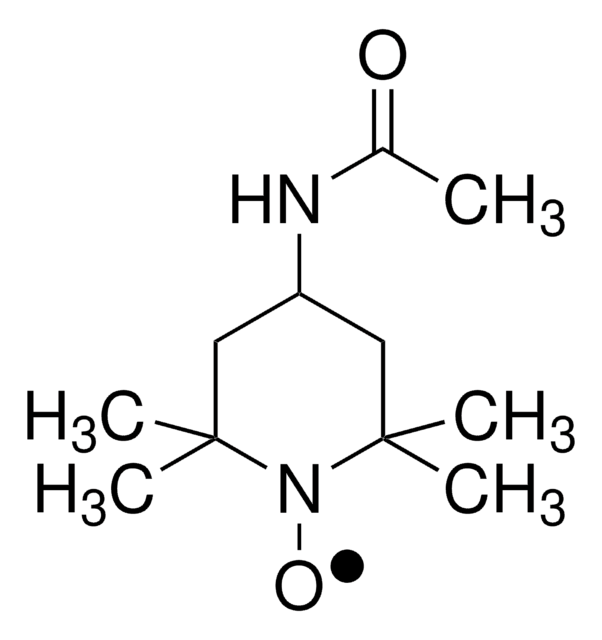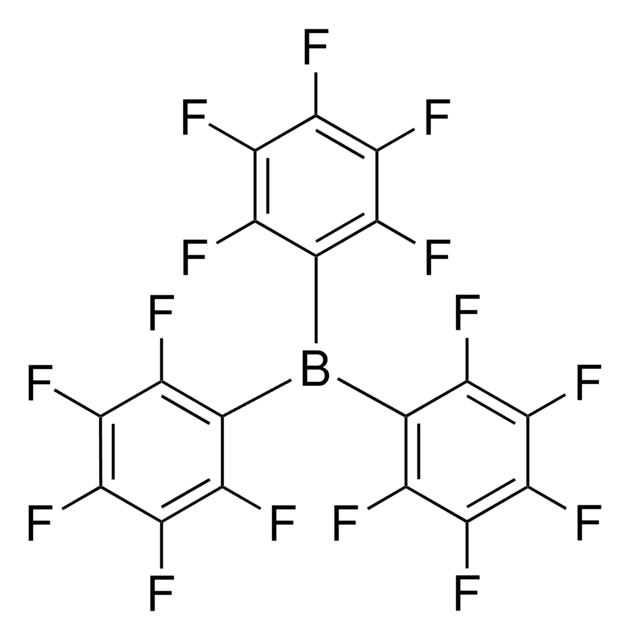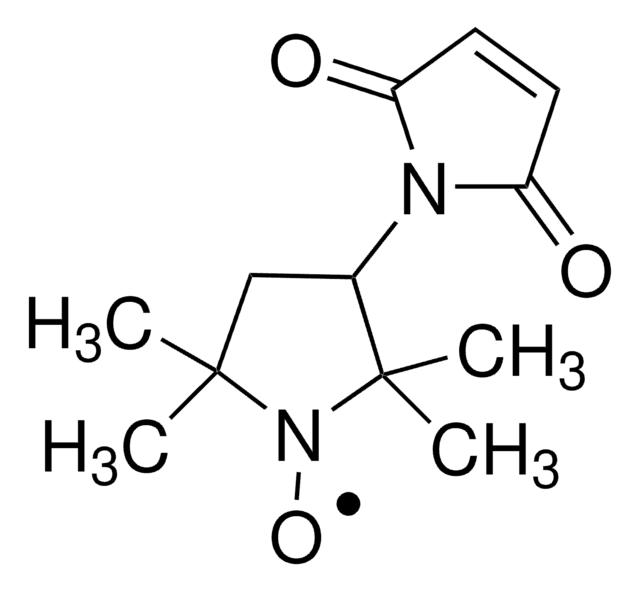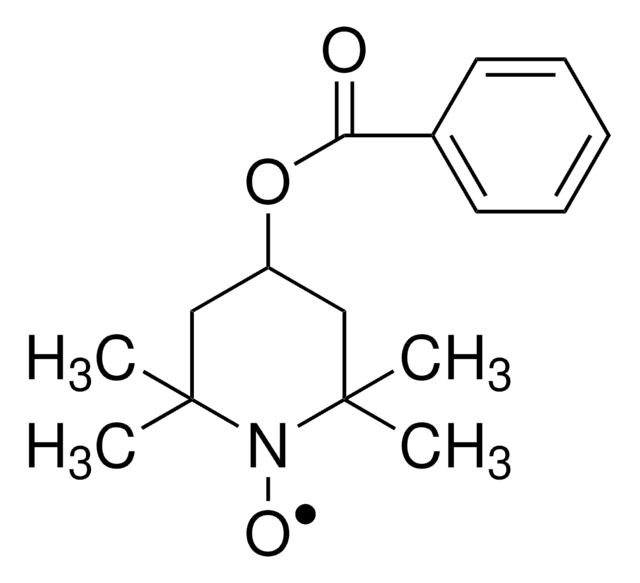Wichtige Dokumente
382000
4-Carboxy-TEMPO, freies Radikal
97%
Synonym(e):
4-Carboxy-2,2,6,6-tetramethyl-piperidin-1-oxyl, 4-Carboxy-2,2,6,6-tetramethylpiperidinyloxy, freies Radikal, 4-Carboxy-TEMPO
About This Item
Empfohlene Produkte
Assay
97%
mp (Schmelzpunkt)
185-189 °C (lit.)
Funktionelle Gruppe
carboxylic acid
Lagertemp.
2-8°C
SMILES String
CC1(C)CC(CC(C)(C)N1[O])C(O)=O
InChI
1S/C10H18NO3/c1-9(2)5-7(8(12)13)6-10(3,4)11(9)14/h7H,5-6H2,1-4H3,(H,12,13)
InChIKey
CYQGCJQJIOARKD-UHFFFAOYSA-N
Suchen Sie nach ähnlichen Produkten? Aufrufen Leitfaden zum Produktvergleich
Allgemeine Beschreibung
Anwendung
Signalwort
Warning
H-Sätze
Gefahreneinstufungen
Eye Irrit. 2 - Skin Irrit. 2 - STOT SE 3
Zielorgane
Respiratory system
Lagerklassenschlüssel
11 - Combustible Solids
WGK
WGK 3
Flammpunkt (°F)
Not applicable
Flammpunkt (°C)
Not applicable
Persönliche Schutzausrüstung
dust mask type N95 (US), Eyeshields, Gloves
Hier finden Sie alle aktuellen Versionen:
Besitzen Sie dieses Produkt bereits?
In der Dokumentenbibliothek finden Sie die Dokumentation zu den Produkten, die Sie kürzlich erworben haben.
Kunden haben sich ebenfalls angesehen
Artikel
TEMPO (2,2,6,6-Tetramethylpiperidinyloxy or 2,2,6,6-Tetramethylpiperidine 1-oxyl) and its derivatives are stable nitroxy radicals used as catalysts in organic oxidation reactions. TEMPO was discovered by Lebedev and Kazarnovskii in 1960. The stable free radical nature of TEMPO is due to the presence of bulky substituent groups, which hinder the reaction of the free radical with other molecules.
Unser Team von Wissenschaftlern verfügt über Erfahrung in allen Forschungsbereichen einschließlich Life Science, Materialwissenschaften, chemischer Synthese, Chromatographie, Analytik und vielen mehr..
Setzen Sie sich mit dem technischen Dienst in Verbindung.